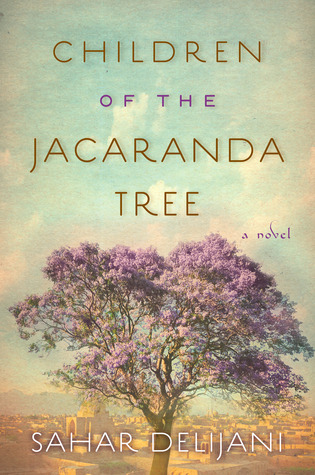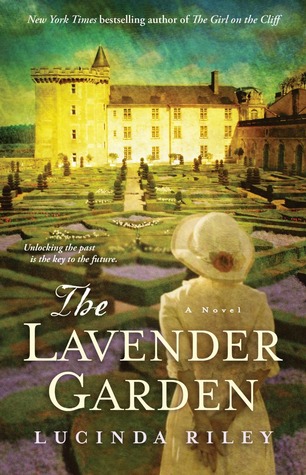Author Lauren Willig is currently on virtual tour for her latest release, The Ashford Affair. I am very pleased to welcome Lauren here to A Bookish Affair for an interview.
1.
What was your inspiration for "The Ashford Affair?"
I blame it all on my friend Christina, who gave me a copy of Frances Osborne’s
The Bolter back in the fall of 2010. For those who haven’t
encountered it yet, The Bolter follows the exploits of Idina Sackville
Gordon Wallace, etc., etc., who racketed about between London and Kenya
in the 1920s, acquiring and discarding husbands
along the way.
All dramatic and fascinating stuff, but what really caught my attention was
the
author’s comment, in the preface, that she hadn’t known that Idina was
her great-grandmother until she was in her teens. The family had kept
the relationship under wraps.
At
the time, my own grandmother was very ill, and it struck me, forcibly,
how much we assume and how little we know of our own family members and
their pasts. What if a modern woman, wrapped up in her own
career worries, were to discover that nothing about her family was as
it seemed? What would that do to her, and her emotional journey? And
what about those women in the past, those women who had faced the
decline of the aristocracy, two World Wars, who had
seen the world as they knew it turn on its head around them?
An
idea began to take root in my head, involving two cousins, one rich,
one poor, tied by old bonds of affection, buffeted by the demands of a
changing world.
I
wasn’t meant to be writing about rackety socialites or poor cousins or
1920s Kenya; I was meant to be writing about Napoleonic spies. But once
the idea hit, it wouldn’t go away. I put the tenth book in
my Pink Carnation series on hold, read up on Edwardian England, World
War I, and 1920s Kenya, and launched into the story that became
The Ashford Affair.
2.
You've
written many books at this point in time. Does writing get easier or
harder over time? Does it depend on the book you are writing at
the time?
I remember, way back when, thinking, “Once I have two books out, then I’ll be a real writer and really know what I’m doing!”
Poor, naïve younger me. Right now, I’m on my
thirteenth book and I still have no idea what I’m doing. Every book
presents its own, unique challenges. Sometimes, it’s trouble really
getting to the heart of what makes a character tick;
other times, it’s wrestling with plot or pacing.
Writing The Ashford Affair, I struggled with
the latter. I knew the characters I was dealing with and the story I
wanted to tell about them, a story spanning ninety-odd years and three
continents, but I wasn’t quite sure how to
frame it. The original drafts of the first few chapters of Ashford
were written in the first person, in the voice of my historical
heroine, as an older woman, looking back. I loved the story she was
telling, but the form wasn’t right. I tried several
different avenues into the story before finally hitting that “Eureka!”
point, where it all fell into place.
3.
What was your research process like for "The Ashford Affair?"
I start out every novel with what I think of
as my immersion phase. Before I launch into the writing, I stockpile
research books and go on reading sprees, plowing through anything I
think might be vaguely useful or related to the plot
or time period of the novel.
With The Ashford Affair, which spans from
1906 to 1999, with stops in the 1910s and 1920s along the way, I spent
several months reading up on Edwardian society, World War, the roaring
twenties, Bright Young Things, and expat life
in Kenya. Fortunately for me, there’s a wealth of material out there,
from biographies and memoirs to letter collections and scrapbooks. One
source led to another, and before I knew it, I was surrounded with a
small fort of books, including fiction from
the period, which is the best way to get a sense of the rhythm and tone
of language at the time.
4.
"The
Ashford Affair" is your first standalone book in awhile. How did your
process for writing this book differ from the Pink Carnation books?
Some parts of my process stayed constant: caffeine
and deadline panic. I find caffeine and deadline panic do more to
propel me through a blank page than anything else. (Especially when the
caffeine contains various sugary syrups and is
topped with a liberal dollop of whipped cream.)
In other ways, it was very different. With the
Pink Carnation books, my readers have grown accustomed to a certain type
of plot and pacing; when I sit down to write, I know I’m working within
those constraints. With
The Ashford Affair, it was the opposite: suddenly, the sky was the limit and it was all wide open spaces. As I mentioned above, writing
Ashford involved a lot of trial and error as I played around with
various ways of telling the story. Having that kind of narrative
freedom was both exhilarating and terrifying.
5.
If you could choose three fictional characters to bring with you to a deserted island, who would you bring and why?
That’s always a
tough one! Diana Gabaldon’s Claire Fraser would be useful to have
around, for her knowledge of plants, herbs, and healing remedies (and,
of course, her wry sense of humor). I’d take Austen’s
Emma with me, knowing that she would be up for a good gossip to wile
away those long hours on the deserted beach. I doubt there would be a
dull moment with Emma around. Last but not least, Elizabeth Peters’s
Amelia Peabody, who I’m sure would give me a crash
course in the latest methodologies in archaeology (and by latest, I
mean pre-World War I) and would keep all marauders at bay with her handy
dandy parasol.
I would be tempted to
include Lord Peter Wimsey, whose ability to talk nonsense is one of his
most endearing characteristics, but I’ve decided to keep this a Girls’
Shipwreck Out. Besides, it would be cruel
to separate him from Harriet Vane when it took them such a long time to
finally get together.
Thanks for stopping by, Lauren!!!























